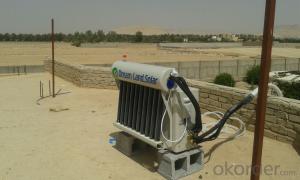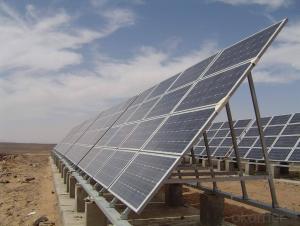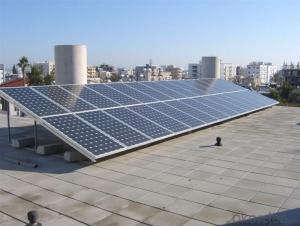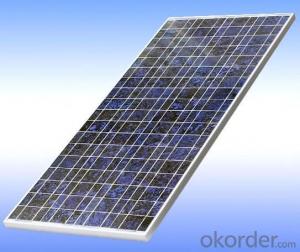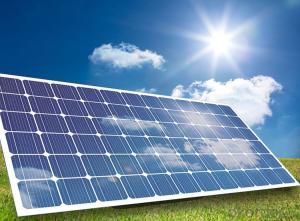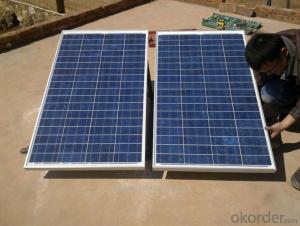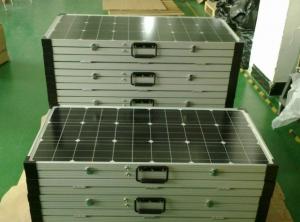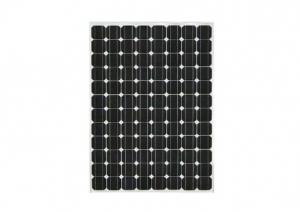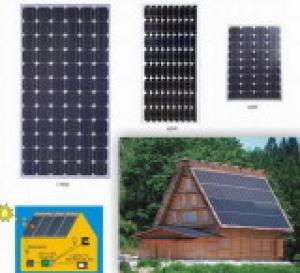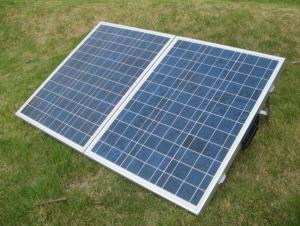3sun CE and TUV Approved 200W Poly Solar Panels
- Loading Port:
- Shanghai
- Payment Terms:
- TT OR LC
- Min Order Qty:
- 10000 watt
- Supply Capability:
- 20000000 watt/month
OKorder Service Pledge
OKorder Financial Service
You Might Also Like
Specification
1. The Introduction of Solar Module
Solar modules use light energy from the sun to generate electricity through the photovoltaic effect. The majority of modules use wafer-based crystalline silicon cells or thin-film cells based on cadmium telluride or silicon. The structural (load carrying) member of a module can either be the top layer or the back layer. Cells must also be protected from mechanical damage and moisture. Most solar modules are rigid, but semi-flexible ones are available, based on thin-film cells.
2.Technical Parameter
Type | CNBM Solar Polycrystalline Series |
Materials | Silicon |
Guarantee | 12 yrs free from defects in materials and workmanship No less than 90% within 10yrs and no less than 80% within 25yrs TUV(IEC61215&IEC61730), CE, UL |
Application | Photovoltaic/ solar/ green energy/ energy saving |
Descriptions | 1.High efficiency crystalline silicon solar cell. Even if under the weak light, the solar module can produce maximum power output. 2.Tempered glass (toughened glass): Anti-reflecting coating and high transmission rate glass increase the power output and mechanical strength of solar module. 3. EVA and TPT: Using high quality EVA and TPT to prevent destroying and water. 4. AI frame: Without screw, rner connection. 6 holes on the frame can be installed easily. 5. Junction box: Multi function junction box with water proof. 6. Long lifetime: ≥25 years; Less power decrease. 7. Good performance of preventing from atrocious weather such as wind and hails. 8. Resisting moisture and etching effectively, not effected by geology. 9. The certificate issued by international authority: UL, TUV, IEC, CE.
|
Packaging Details: | 26pcs/pallet, 28pallets/ 40HQ Our solar panels are packed in cartons, and then pallet. Shipping by sea or by air are both ok, it up to customer’s chose. We’d like to inquiry the freight cost for customer after be informed exact quantity and destination address. |
3. Application and Pictures of Products
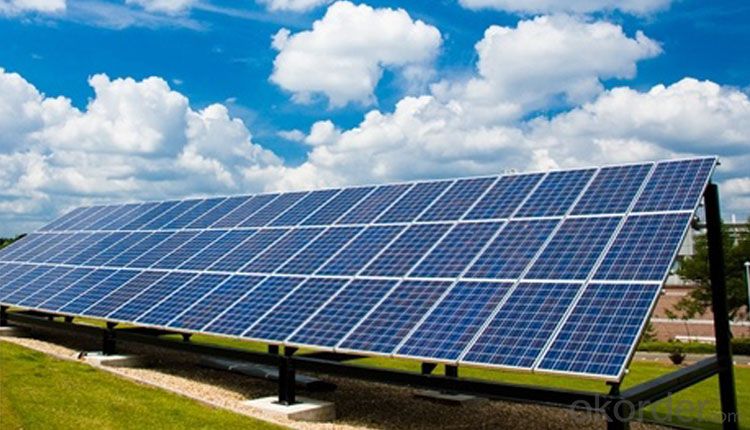

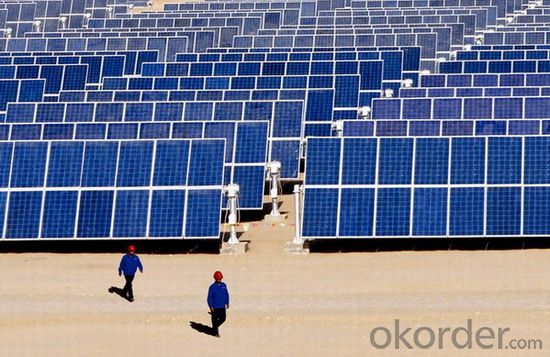
4. How to Work
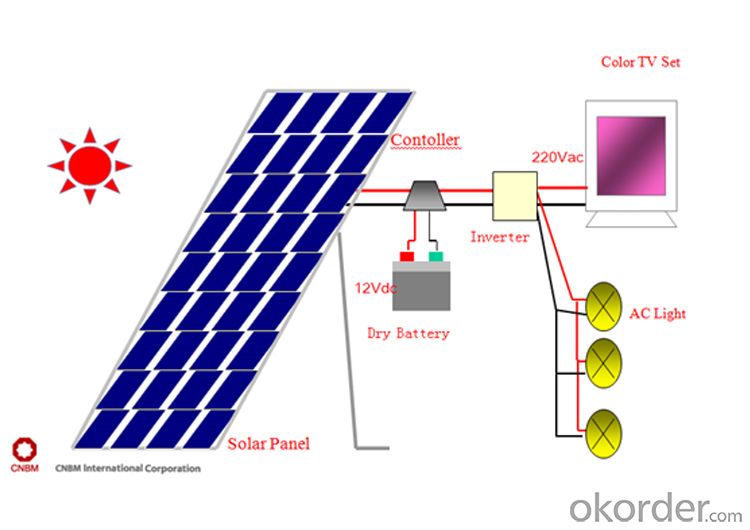
5. Packing Details
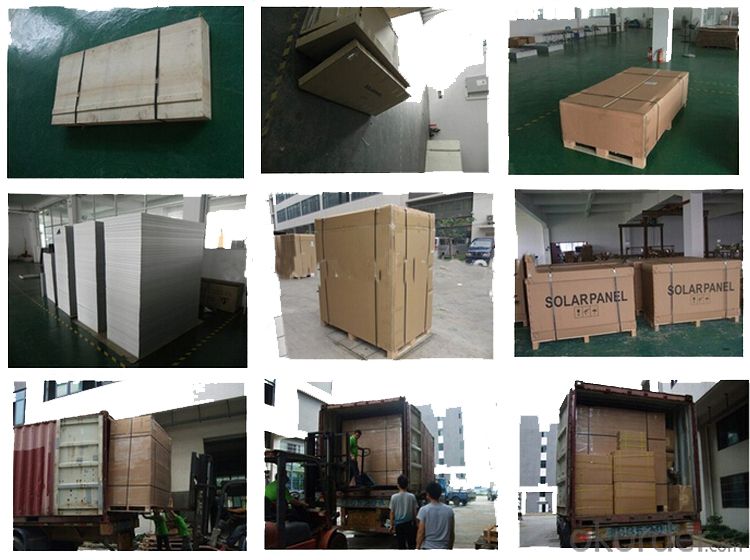
6. FAQ
Q1: What is the business type for the company?
A1: We are one of the biggest manufacturers in zhejiang.Chnia. Which is a high tech PV enterprise dedicated to the research, development, production and sales..
Q2: How long solar panel warranty can you offer?
A2: 10-Year product warranty,25-year linear power output warranty
If there is any quality problem, we will pay for freight and send free parts to you.
Q3: How many certificates do you have?
A3: We have 16 certificates,such as CE, TUV, UL, and so on.
- Q: Hi, i want to please a solar panel in Lima Peru, my Latitude is -2 and longitude -77. I understand that since i am in the southern hemisphere, my panel should be pointing north. However, i am using a program called pvdesigner, and according to this, y should face my panel with and azimuth of 00degrees (0 = south) and a tilt of 60degrees. Does this make any sense?thanks
- Typically, solar panels are installed facing the same as your latitude = 2 degrees to the North measured from horizontal. 60 degrees from vertical = 30 degrees from horzontal will give almost as much power in June as in December = beginning of Summer. You can face your panels straight up = zero tilt from vertical = better for December/ not so good in June. Usually, the same tilt as your North facing roof is best as it simplifies installation and reduces wind loading. Shade from trees etc will much reduce the power you get. Neil
- Q: Are there any health risks associated with solar panels?
- Overall, solar panels do not pose significant health risks. They are a safe and environmentally friendly source of energy. However, some minor risks can include potential electrical hazards during installation or maintenance, such as electric shock or fire. Additionally, the production and disposal of solar panels may involve certain toxic materials, although efforts are made to minimize their impact. Nonetheless, these risks are generally well-managed and can be mitigated through proper installation, maintenance, and adherence to safety guidelines.
- Q: I have noticed how solar panels cause a glare. Since I am not around solar panels all the time I relate it to when the sun reflects off another car and right into my eyes. So I always wonder if solar panels effect birds and/or animals due to the glare. If I am wrong and solar panels aren't this bad please tell me.
- No, they don't solar panels are harm less to the enviroment. They take in light energy, nothing else. So you don't have to worry about injury!
- Q: Can solar panels be installed on a billboard or signage?
- Yes, solar panels can be installed on a billboard or signage.
- Q: Can solar panels be used in areas with frequent power outages?
- Yes, solar panels can be used in areas with frequent power outages. Solar panels generate electricity from sunlight, so as long as there is sunlight available, they can continue to produce power even during power outages. Additionally, solar panels can be equipped with battery storage systems to store excess energy generated during the day for use during periods of low sunlight or power outages, making them a reliable source of electricity in areas with frequent power disruptions.
- Q: How much space is required for installing solar panels?
- The amount of space required for installing solar panels can vary depending on factors such as the size and type of panels, as well as the energy needs of the property. However, on average, a typical residential solar panel system requires about 100-400 square feet of roof space per kilowatt of installed capacity.
- Q: How do solar panels affect the environment?
- Solar panels have a positive impact on the environment as they produce clean, renewable energy without emitting harmful greenhouse gases. They help reduce air pollution, combat climate change, and conserve natural resources by decreasing our reliance on fossil fuels. Additionally, solar panels have a minimal environmental footprint during their operation and can be recycled at the end of their lifespan, making them a sustainable energy choice.
- Q: Can solar panels be used in areas with high levels of dust?
- Yes, solar panels can still be used in areas with high levels of dust. While excessive dust can reduce the efficiency of solar panels by blocking sunlight, regular cleaning and maintenance can help mitigate this issue. Additionally, advancements in technology, such as self-cleaning panels or coatings that repel dust, are being developed to further enhance the performance of solar panels in dusty environments.
- Q: I was told by a veteran that jcpl had a program that installs free solar systems for disabled vets.If this is true who do i contact?
- It varies from state to state.
- Q: i trying to make a solar panel. right now i dont have money to go and buy a copper sheet. so can i make it out of aluminum foil. if there is a way please tell me how. and what do i use for wires. i making this to charge batteries.
- You can't make a solar panel to generate any reasonable amount of electricity from that. You need a semiconductor to start with, in order to have something that can generate free charge carriers(electrons and holes) from photons. Then you need a junction which can separate the charges. In principle you could make a Shottky Diode solar cell from copper if you could find a doped semiconductor to bond a sheet of it to the copper. To form a decent electric field there should be a significant difference in work functions between the copper and the semiconductor, this will generally require the semiconductor to be doped. On top of this you would need a transparent conductor (most used are things like ITO or other 'TCOs' - Transparent Conducting Oxides) to be the top electrode to inject replacement charges into the semiconductor to replace the effect of recombination current. In summary, it's difficult to DIY. You generally need complicated machinery to get decent crystal growth and/or doping.
Send your message to us
3sun CE and TUV Approved 200W Poly Solar Panels
- Loading Port:
- Shanghai
- Payment Terms:
- TT OR LC
- Min Order Qty:
- 10000 watt
- Supply Capability:
- 20000000 watt/month
OKorder Service Pledge
OKorder Financial Service
Similar products
Hot products
Hot Searches
